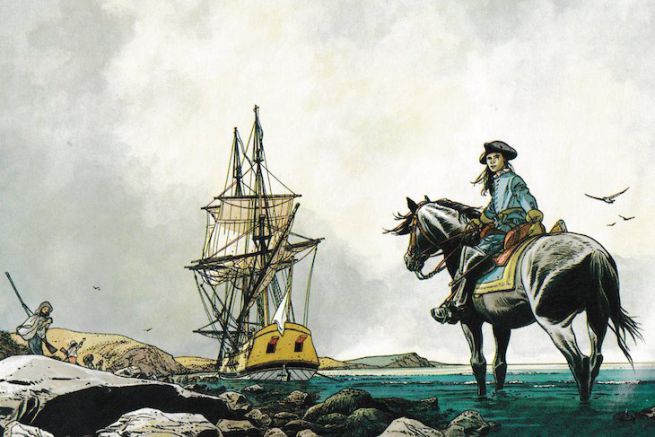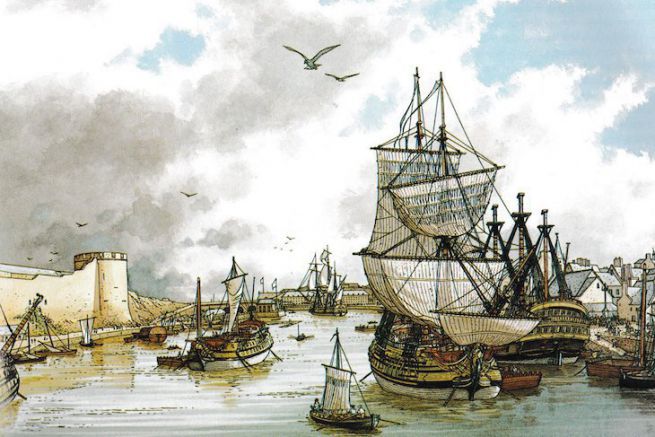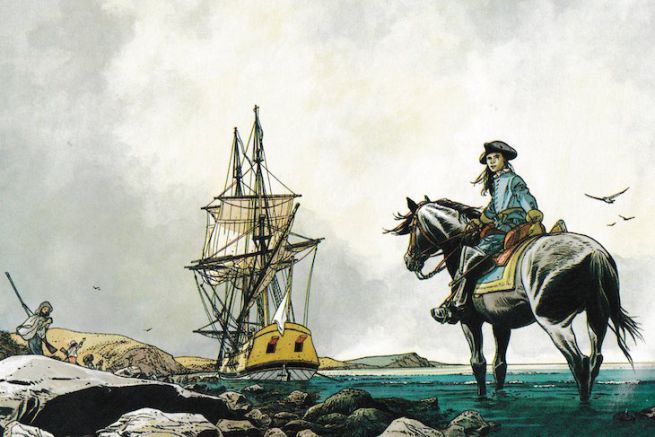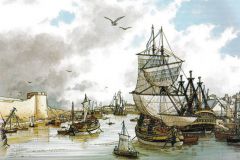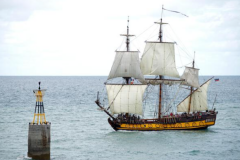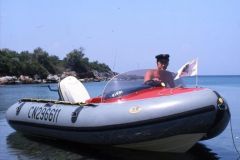The working songs
Edges to be hoisted up
At the time, it was the sailors who hoisted the sails of the ships, with the sole force of their arms. The efforts required are intense and the movements carried out in jerks and cadence must be coordinated. The singing then serves to find the right rhythm to hoist the sail, and motivates the crowd to increase their strength tenfold.
This song is an alternation of solo and choir. The soloist imposes the rhythm of the song - a two-stroke composition - and the sailors take up the chorus again.
Example: Morlaix Bridge, Jean-François de Nantes

Celtic Circle Anjela Duval Paimpol
Edge to turn, capstan or windlass
Anchoring is a term used in the navy that means "lifting the anchor". This song is therefore mainly used for departures and is similar to the songs to be moved (moving a ship by its mooring lines).
- The capstan
To turn, the sailors used a capstan - a vertical-axis winch with bars attached and pushed by the sailors to turn the winch and raise the anchor.
The sailors had to keep up and avoid jolts. The walking rhythm can be fast or slow - two beats simple or composed or four beats - and the songs are often joyful.
Example: the privateer, the great runner, three sailors from Groix
- The windlass
The windlass is also a vertical axis winch operated by a pendulum system. The sailors pushed alternately on one or the other of the levers, in rhythm. The tempo of the songs used was slow, but jerky with a rhythm broken down into two or four marked or compound beats.
Example: Drive young people, drive, drive, Bold guys
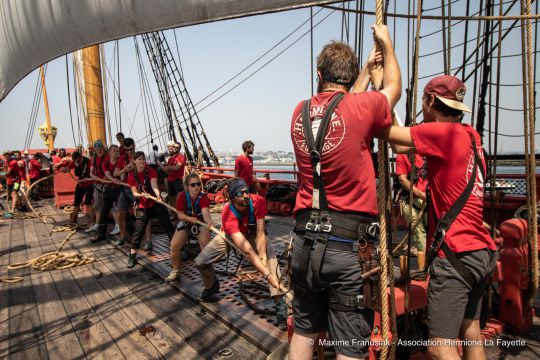
Edges to be pumped
The edges to be pumped are often fields to be turned. It was the songs hummed by the sailors that evacuated the sea water accumulated in too many during the crossings.
Example: Again and again and hop and turn
Swimming / rowing songs
We are talking here about the songs sung during rowing. The rhythm is slow to match the movement of the oars - and the words are rather sad on a four beat rhythm.
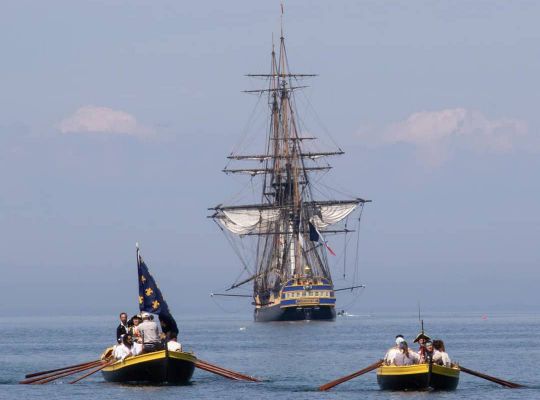
The Hermione ©Agathe Roullin
Songs to be shifted
Shifting means moving a ship by means of its mooring lines. Indeed, when a ship arrived in port, it was often necessary to guide it by pulling it. There were two rhythms of songs:
- A slow song to accompany the sailors who were walking with a heavy step to produce a constant effort
- A song close to the song to be hoisted with more rhythm to accompany the still sailors who pulled the ropes in jerks. The rhythm - two simple beats or four beats - as well as the tempo was given by a soloist.
Relaxation songs
Front forecastle edge
The forecastle was the part of the vessel where the crew rested when there was no activity or when smoking, due to the risk of fire on board. With a pipe in their mouths, they would hum songs to dream or sad or monotonous songs, accompanied by musical instruments, which were not characterized by any specific tempo or rhythm.
Complaints
The complaints refer to the difficult working conditions, the woman left on land, the deserted village. The melody is slow and melancholic, on a two- or four-stroke rhythm like a stroll and played in minor tones.
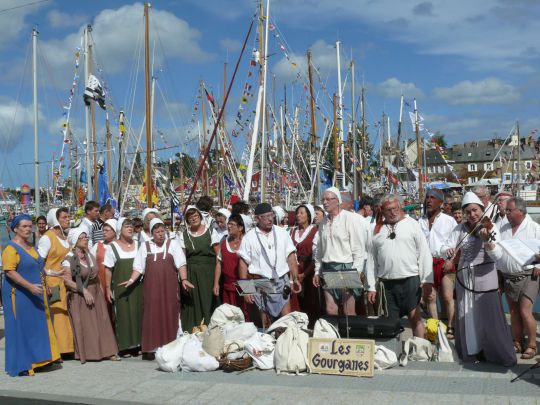
Festival du Chant de Marin - Paimpol
Dance song
During periods of inactivity, sailors may be called upon to fight. To avoid quarrels and keep them occupied, they dance to three-beat rhythms, waltz or polka.
These are also the songs that are sung at the port, in the taverns. The music is very varied, from the melancholic tone for dancing or humming - two or three times composed - to the song to drink - two times.

